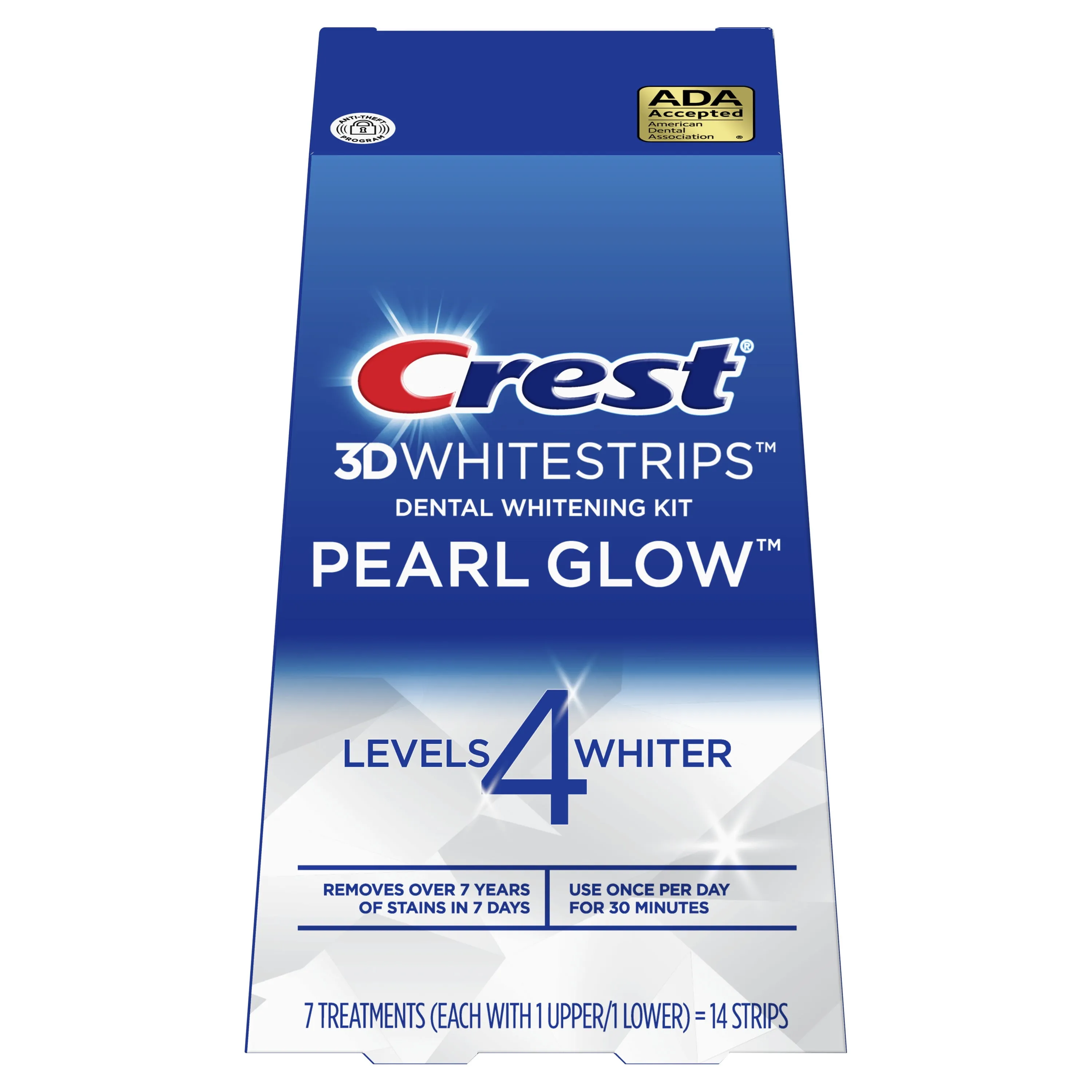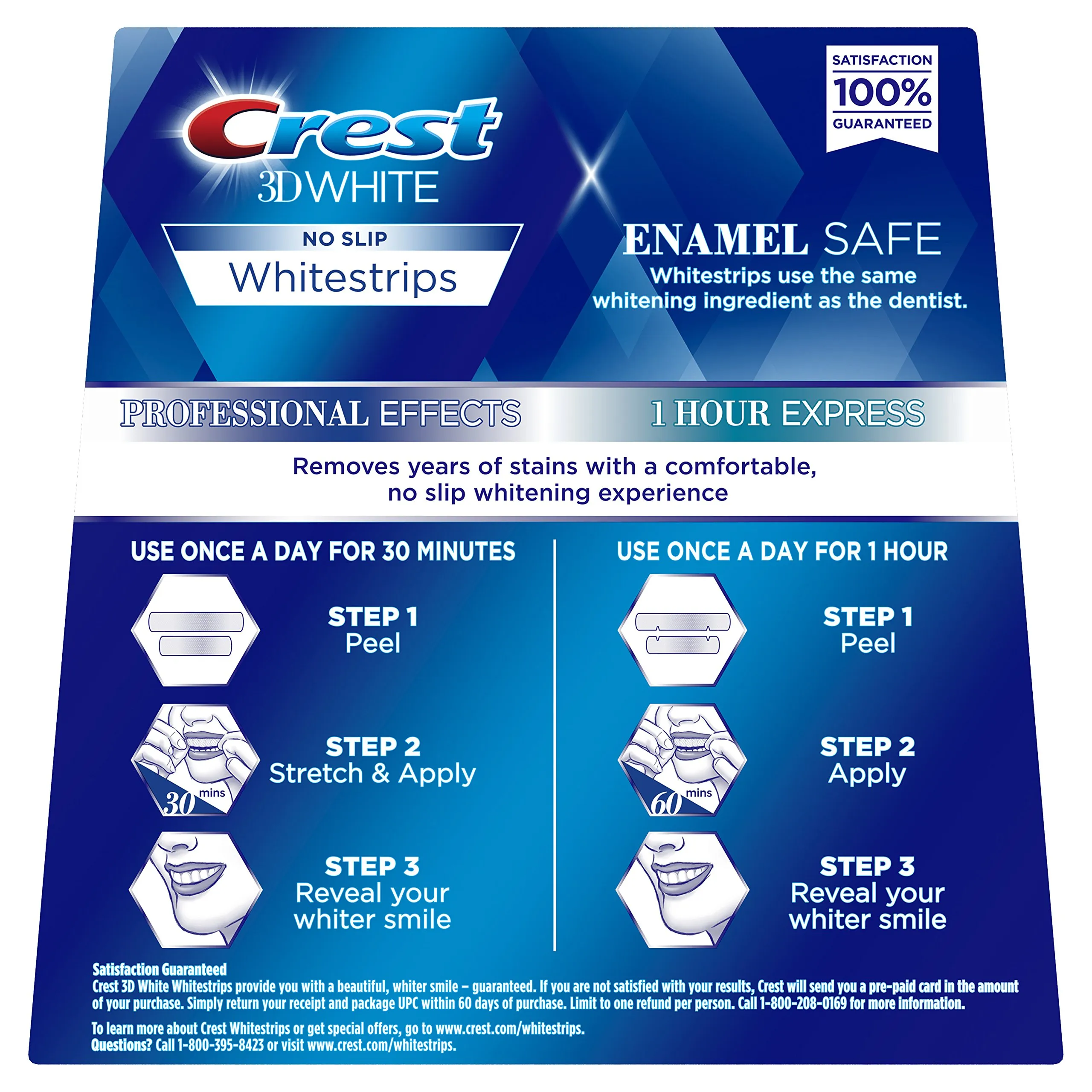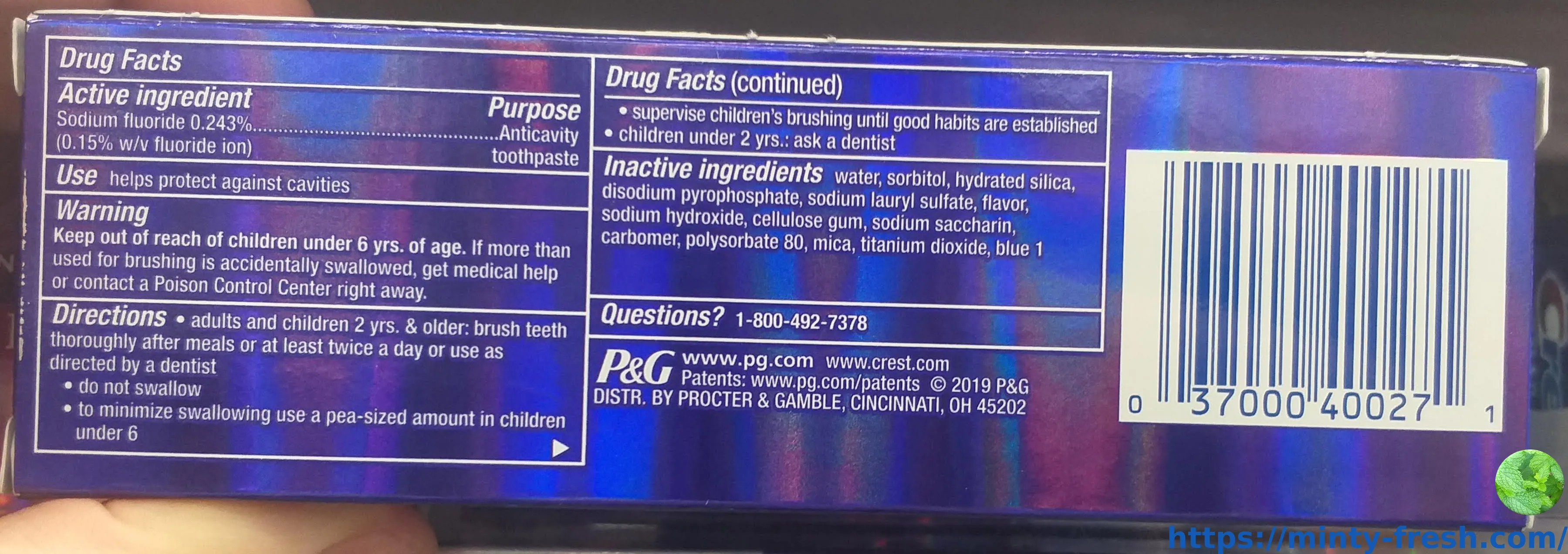What are Crest Whitening Strips?
Crest Whitening Strips have revolutionized the at-home teeth whitening game, offering a convenient and effective way to achieve a brighter smile. These flexible, thin strips are coated with a whitening gel that adheres directly to the teeth. Designed to be easy to use, they are a popular choice for those looking to enhance their dental aesthetics. The strips work by applying the active whitening ingredients directly to the tooth surfaces, targeting stains and discoloration. Crest Whitening Strips are widely available in various formulations, catering to different whitening needs and sensitivities. They provide a less expensive alternative to professional whitening treatments. Understanding the ingredients and how they work is key to using Crest Whitening Strips safely and effectively.
Key Ingredients in Crest Whitening Strips
The effectiveness of Crest Whitening Strips lies in their carefully chosen ingredients, each playing a specific role in the whitening process. While the exact formulation can vary slightly between different product lines, several key components remain consistent. The primary active ingredient is usually hydrogen peroxide, a well-known bleaching agent that penetrates the enamel to break down stain molecules. Other supporting ingredients ensure the effectiveness, safety, and usability of the strips. Understanding these ingredients allows consumers to make informed decisions. Examining each component reveals why Crest Whitening Strips are a leading choice for achieving a radiant smile. Furthermore, the formulation aims to provide effective results with minimal discomfort.
Hydrogen Peroxide The Whitening Agent

Hydrogen peroxide is the star of the show when it comes to Crest Whitening Strips. This chemical compound is the primary whitening agent, responsible for the significant brightening of teeth. Its mechanism involves breaking down the stain molecules that cause discoloration, effectively making teeth appear whiter. The concentration of hydrogen peroxide can vary between different Crest Whitening Strips products, with higher concentrations often leading to faster results but also potentially increasing the risk of sensitivity. Careful consideration of the hydrogen peroxide concentration is important. It balances effectiveness with user comfort, making it a crucial aspect of product selection. This key ingredient is central to how these strips work and is crucial to understand for anyone interested in at-home teeth whitening.
The Role of Hydrogen Peroxide
The role of hydrogen peroxide in Crest Whitening Strips is multifaceted. It acts as an oxidizing agent, meaning it releases oxygen that penetrates the enamel and dentin layers of the teeth. Once inside, the oxygen molecules interact with the stain compounds, breaking them down into smaller, less visible particles. This process removes both surface stains and deeper discoloration, leading to a noticeably brighter smile. Hydrogen peroxide’s ability to effectively target stains makes it a powerful tool in teeth whitening. The concentration and duration of exposure influence the degree of whitening achieved. It’s essential to follow the instructions provided with the product.
Other Active Ingredients
Beyond hydrogen peroxide, Crest Whitening Strips often include other active ingredients to enhance the whitening process and improve the overall user experience. These additional components work synergistically with hydrogen peroxide to deliver optimal results. Some formulations may incorporate ingredients to reduce sensitivity or to promote enamel remineralization. The specific combinations vary depending on the product. Understanding these other active ingredients helps consumers appreciate the comprehensive approach. It also underscores how Crest Whitening Strips are designed to deliver safe and effective whitening. These ingredients play an important part in making the process as comfortable as possible.
Glycerin The Humectant

Glycerin plays a critical role in Crest Whitening Strips as a humectant. This means it helps to retain moisture, preventing the whitening gel from drying out. Glycerin ensures the strips adhere effectively to the teeth and maintains the integrity of the active ingredients. The presence of glycerin contributes to the overall comfort of use, as it prevents the strips from becoming stiff or uncomfortable during application. Glycerin helps maintain a consistent whitening action throughout the recommended treatment time. Understanding this key ingredient highlights its essential function in the effectiveness and user experience of Crest Whitening Strips. It’s a critical component in the formulation.
Sodium Hydroxide for pH Balance
Sodium hydroxide, often included in small amounts, is used to adjust the pH of the whitening gel. By maintaining a suitable pH level, sodium hydroxide helps to optimize the effectiveness of hydrogen peroxide and ensure the stability of the formulation. Maintaining the right pH is crucial for the safety of the product. It minimizes potential irritation to the gums and teeth. The careful balance provided by sodium hydroxide is essential. It contributes to the overall efficacy and user experience. It is a key ingredient for a comfortable experience.
Sodium Saccharin for Taste
Sodium saccharin is a common ingredient in Crest Whitening Strips, acting as a sweetener to improve the taste of the gel. Without sodium saccharin, the hydrogen peroxide could have a less-than-pleasant taste. The addition of sodium saccharin makes the experience of using the strips more palatable. This is especially important for maintaining compliance with the recommended usage. This sweetener ensures that the whitening process is as pleasant as possible. It helps to make it easier for users to incorporate the product into their daily routine. The user experience is enhanced.
Tips for Safe and Effective Use

To achieve the best results with Crest Whitening Strips, it is important to follow the manufacturer’s instructions carefully. Proper application and adherence to the recommended treatment duration are essential for effectiveness. It is also important to maintain good oral hygiene, including regular brushing and flossing. Brushing teeth immediately before applying the strips is generally not recommended. The strips should be applied to clean, dry teeth. Consistent use, as directed, is key to achieving and maintaining a brighter smile. Regular check-ups with a dentist are also essential.
Application Process Step-by-Step
Applying Crest Whitening Strips correctly is crucial for achieving optimal results. First, ensure your teeth are clean and dry. Then, peel the strips from their backing and carefully apply them to your upper and lower teeth, aligning them with the gumline. Gently press the strips onto your teeth, ensuring good contact and removing any air bubbles. Leave the strips on for the recommended time, usually 30 minutes. After use, remove the strips and discard them. Rinse your mouth and avoid eating or drinking for at least 30 minutes. Following these steps will make the process easier and maximize the effectiveness of the treatment.
Best Practices for Results
To maximize the effectiveness of Crest Whitening Strips, consider these best practices. Avoid consuming stain-causing foods and drinks, such as coffee, tea, red wine, and dark-colored sodas. Maintain excellent oral hygiene to support the whitening process. If you experience sensitivity, consider using a toothpaste designed for sensitive teeth. Consistent and correct use is crucial for optimal results. Regular dental check-ups are also very important. following these guidelines will enhance the effectiveness of the Crest Whitening Strips and help you achieve a dazzling, brighter smile.
Potential Side Effects

While Crest Whitening Strips are generally safe, some users may experience potential side effects. The most common side effect is tooth sensitivity, which can manifest as temporary discomfort or pain. Gum irritation is another possible side effect, often caused by the whitening gel coming into contact with the gums. These side effects are usually mild and temporary. If you experience severe sensitivity or persistent irritation, discontinue use and consult with your dentist. Always follow the product instructions to minimize the risk of side effects. Proper use, combined with awareness of potential side effects, ensures a safer and more comfortable whitening experience.
Understanding Sensitivity
Tooth sensitivity is a common side effect of using Crest Whitening Strips. It occurs because the hydrogen peroxide can penetrate the enamel and reach the nerves in the teeth. This sensitivity is usually temporary and resolves shortly after the treatment. To manage sensitivity, you can use a toothpaste formulated for sensitive teeth. This toothpaste can help to block the tubules in the teeth and reduce the sensitivity. If sensitivity persists or becomes severe, consider reducing the frequency of treatments or consulting your dentist. Understanding sensitivity is important. It allows users to address it and continue with the teeth whitening process safely and comfortably.
When to Consult a Dentist
It is important to consult a dentist if you experience any adverse reactions to Crest Whitening Strips. Persistent tooth sensitivity, severe gum irritation, or any other unusual symptoms should be brought to the attention of a dental professional. Your dentist can assess the situation and provide appropriate advice and treatment. They may recommend adjusting the treatment plan or exploring alternative whitening options. Regular dental check-ups are also vital to monitor your oral health. This includes addressing any potential issues that may arise from whitening treatments. Consulting your dentist ensures that you are using Crest Whitening Strips safely and effectively. It also helps in maintaining overall oral health.
